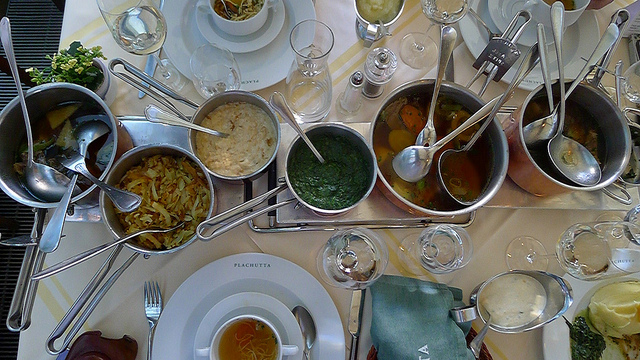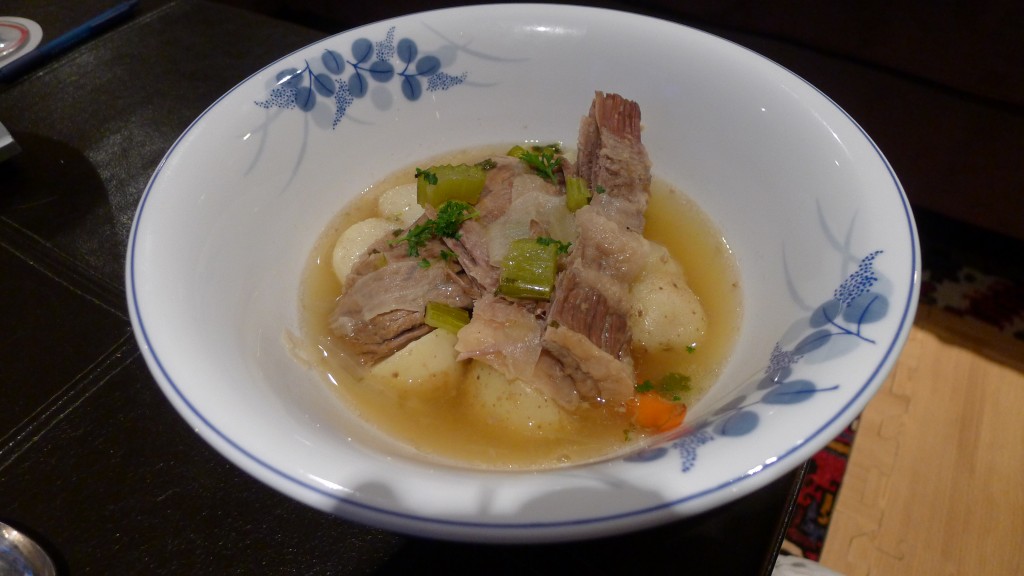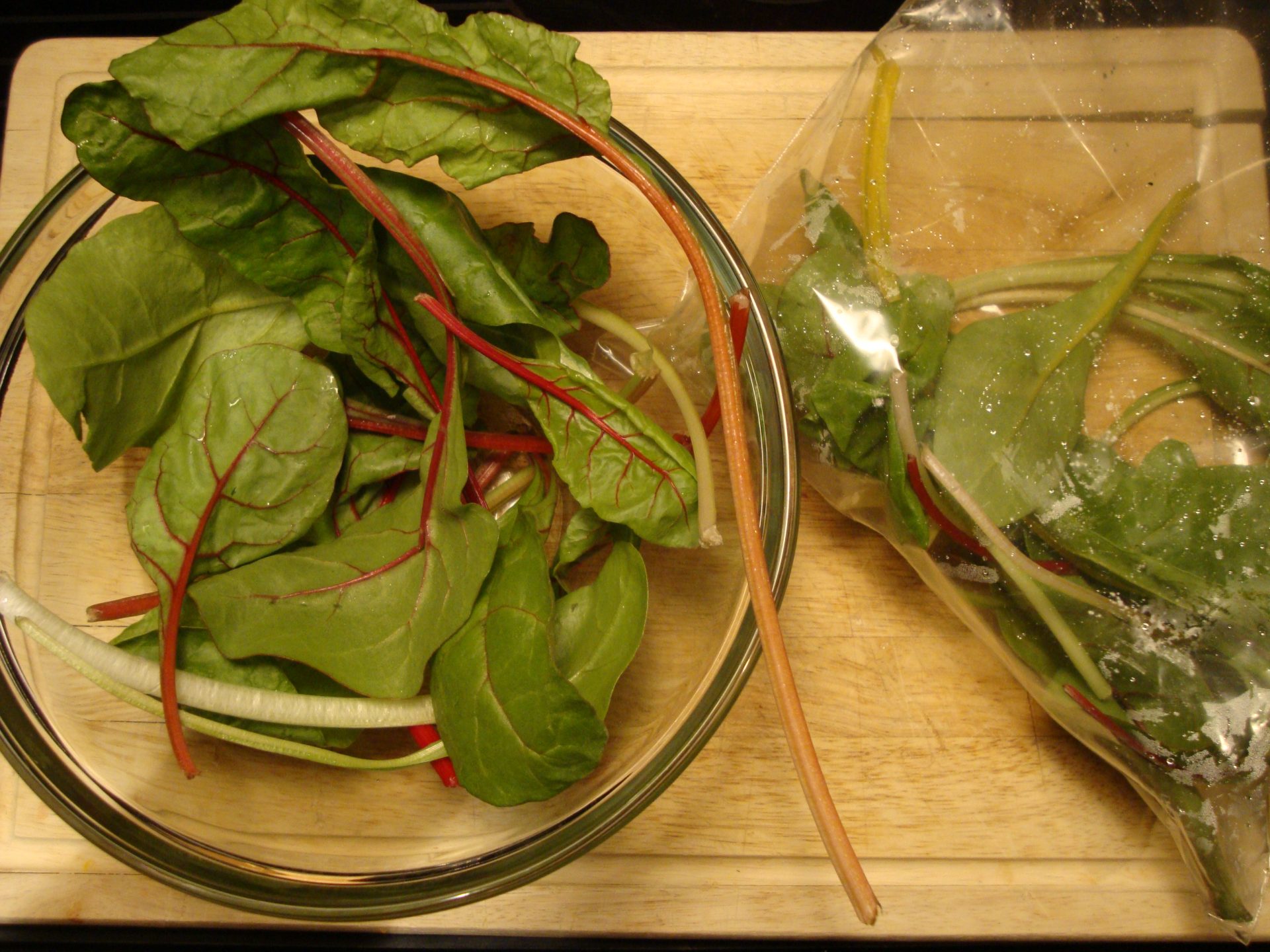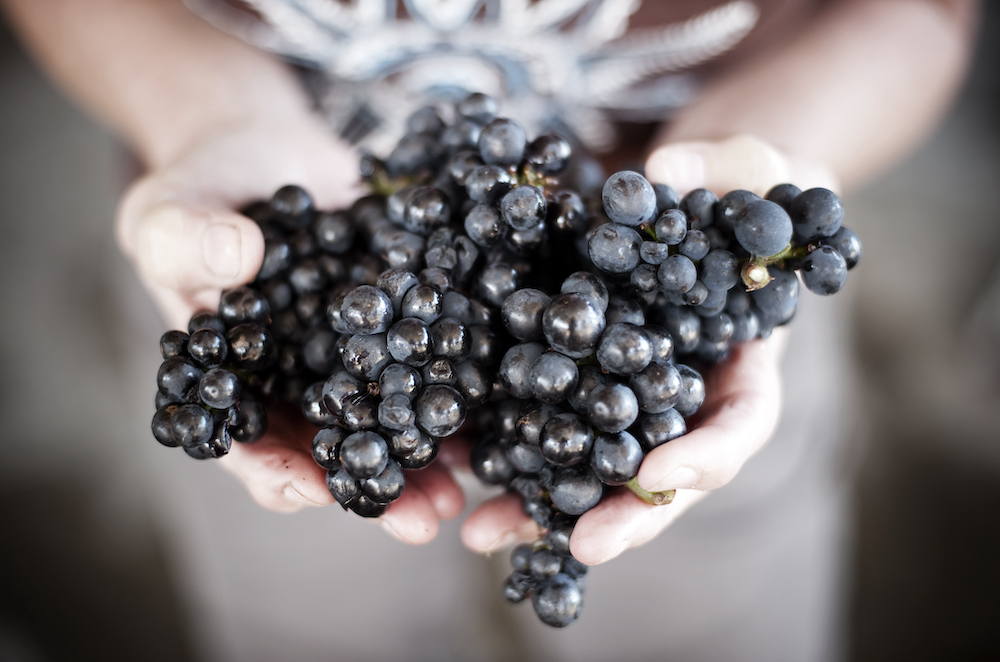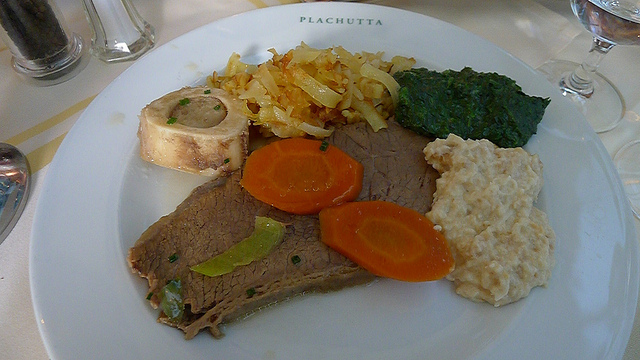
Viennese Tafelspitz with the traditional accompaniments: potatoes, creamed spinach, apple sauce (off to the side), and creamed horseradish. Quite a step up from what most imagine when they think of boiled beef.
From the French Pot-au-feu, through the Jewish Gedemfte Flaysh, to the Bollito Misto of northern Italy and beyond, boiled beef has for centuries satiated the hungers and comforted the souls of rich and poor alike. While many think of boiled beef as being the epitome of terrible British food, it is only recently that I have really come to appreciate the myriad pleasures of such a dish. Far removed from some of the culinary travesties that were foisted upon me as a young lad, I have come to understand that when executed in the correct manner, boiled beef can be elevated to a thing of exquisite beauty, delivering waves of gastronomic ecstasy to the gourmand’s palate.
Earlier this year I was fortunate enough to spend the evening dining at Vienna’s temple to the historied Tafelspitz, Plachutta. Directed there by the sage hand of Chef Chris McDonald, Plachutta has been serving what is considered Austria’s national dish for many a decade. McDonald has always been fond of boiled beef (when it is done properly) and feels that our collective Canadian or Torontonian aversion to it may come down to traumatic experiences with the stuff in our youth. Indeed it is true that boiled beef can be an absolute disaster if one comes at it without first doing a little research, but with some guidance from a couple of books or a little searching on the interwebs, one will find examples of slowly boiled beef recipes from many cuisines around the globe. With some good ingredients and a little patience one can create a pot of the truly sublime.
Below is my take on slow-cooked boiled beef, that despite its almost four hour prep/cook time is an absolute breeze to make and well worth your investment. Even after a couple of hours of cooking you’ll find yourself hovering over the pot to inhale the enticing aromatics, and taking just one last lip-scalding teaspoon of the essence-like broth “just for a little taste”.
Preparation/Cooking time: Approximately four hours Ingredients: 5 lbs of good quality beef brisket Bunch of parsley (chopped) 4 Bay leaves 4 Juniper berries 12 Black Peppercorns (whole) 2 Medium onions peeled and quartered 4 Ribs of celery cut into 1cm sections 8 Medium-sized carrots (peeled and whole) 1 Good-sized leek (discard the green parts, clean, cut in half lengthwise, and then cut into 1cm sections) Method:
- While traditional Tafelspitz calls for what is known as the Standing Round, Top Rump, or Topside cuts of beef, I much prefer to use a nice piece of boneless Brisket. St. John’s Fergus Henderson also loves using Brisket but recommends brining the beef for some 12 days before cooking, something that I may experiment with in the future.
- Add the beef to a large pot of cold water, ensuring that the beef is completely covered.
- Bring to the boil and then skim any of the nasty-looking stuff that rises to the surface… I have discovered that my dog goes nuts for this gubbins. Probably not the best thing to feed him…
- Return to a really gentle simmer where you can just see the water rumbling around and no more.
- Then add the celery, bay leaves, juniper berries, one of your carrots, peppercorns, parsley, and a palmful of sea salt. Then just leave it be, uncovered.
- Go off and read a book for 2 and half hours and then add the onions.
- Go off and read for another 30 minutes and then add the carrots and leeks.
- Go off and read for another 30 minutes and then come back and remove the one soggy carrot.
- Season to taste.
- Slice the meat in the pot and then serve in bowls over boiled potatoes, giving each a whole carrot and a couple of ladles of the utterly delicious broth.
- Parsley to garnish.
- Sit down and enjoy.
 Edinburgh-born/Toronto-based Sommelier, consultant, writer, judge, and educator Jamie Drummond is the Director of Programs/Editor of Good Food Revolution… And that recipe is a keeper.
Edinburgh-born/Toronto-based Sommelier, consultant, writer, judge, and educator Jamie Drummond is the Director of Programs/Editor of Good Food Revolution… And that recipe is a keeper.

